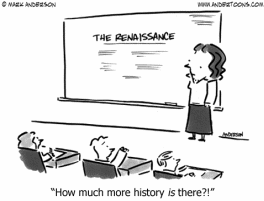
| Unit 4- Early Music | The Medieval World | Gregorian Chant | The Renaissance You are here |
Renaissance Composers | Assignments |
| The Age of the Renaissance |  |
The period of time from about 1450 - 1600 is known as 'The Renaissance' in music and art history. The word renaissance means "re-birth". The people of this time were convinced theirs was an age both different from and better than preceding times. Erasmus said
"The world is coming to its senses as if awakening from a deep sleep".
Men were re-discovering the Golden ages of Rome and Greece. During the fifteenth and sixteenth centuries, areas of learning were broadening to include secular studies that had been neglected in the earlier Christian centuries.
On YouTube | Click here for closed captioned video Click here if the video above is blocked | transcript of video
The world had recovered from two great drains on society that had cursed the Dark Ages - the black plague and the hundred years war. The black plague (or black death) had wiped out as much as 60% of the European population by 1400. The hundred years war between England and France lasted from 1337 to 1453. Both of these events reduced productivity and inhibited the growth of knowledge and art.
Historical Events
Here is a timeline of significant events that happened during the Renaissance:
1452 - Birth of Leonardo DaVinci
1453 - End of the hundred years war
1455 - Gutenberg printed the Bible
1492 - Christopher Columbus sails to America
1509 - Henry VIII becomes King of England
1519 - Martin Luther begins the Protestant Reformation
1558 - Elizabeth becomes Queen of England
Art, Architecture and Literature
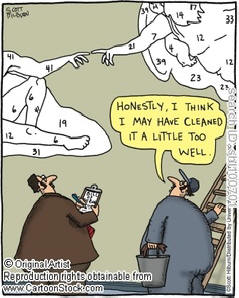
Artists of the Renaissance revived the classical forms originally developed by the ancient Greeks and Romans, and they were concerned with the secular life - they had an interest in humanism and asserted the importance of the individual. Artists of the Renaissance period were no longer regarded as mere artisans, as they had been in medieval times, but for the first time emerged as independent personalities, comparable to poets and writers. They sought new solutions to formal and visual problems, and many of them were also devoted to scientific experimentation. In this context, mathematical or linear perspective was developed, a system in which all objects in a painting or in low-relief sculpture are related both proportionally and rationally. As a result, the painted surface was regarded as a window on the natural world, and it became the task of painters to portray this world in their art. Consequently, painters began to devote themselves more rigorously to the rendition of landscape—the careful depiction of trees, flowers, plants, distant mountains, and cloud-filled skies. Artists studied the effect of light out-of-doors and how the eye perceives all the diverse elements in nature. They developed aerial perspective, in which objects become increasingly less distinct and less sharply colored as they recede from the eye of the viewer.
|
Renaissance architecture was inspired by the architecture of classical Greece and Rome. Renaissance architecture was highly symmetrical and carefully proportioned.
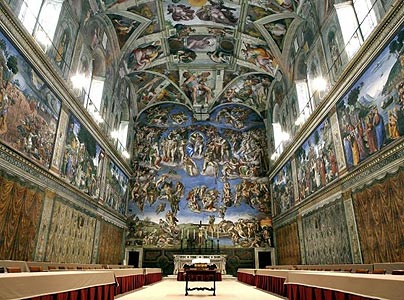 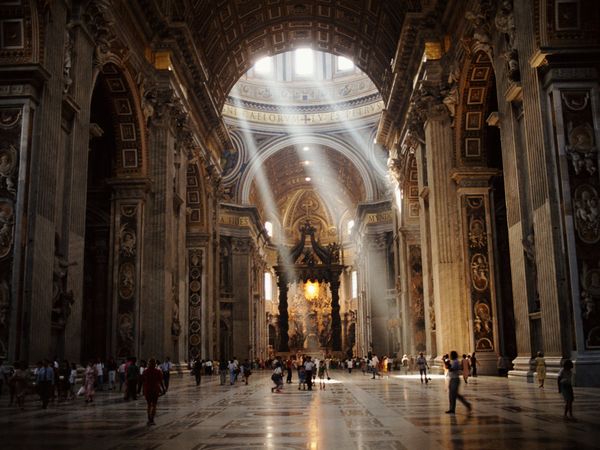 |
Features of Renaissance Buildings:
Click on the images to the left to see Note the classical columns, use of pilasters, check out the dome ceiling. |
Literature became available to the people due to the invention of the printing press. Now the common man had first-hand access to information; he did not have to depend on the transmission and interpretation of learning and literature by others (usually men of the Church). Famous writers of the Renaissance included Dante (Divine Comedy), Machiavelli (The Prince), Cervantes (Don Quixote) and a the end of the era, Shakespeare
Music
The art of music progressed more during the Renaissance than any era before. Certainly, more music was composed and performed than in any earlier age. Although the music of the Renaissance was usually written for a specific purpose, composers created works that were as aesthetical pleasing as they were functional. For the first time all musical resources were being used: the entire chromatic scale, the full range of voices and instruments, a wider range and better quality of texts, independent instrumental forms of music were developed.
Musicians still depended on the patronage of the Church or the Court, but the better musicians began to enjoy a following - the idea of the 'great composer' was growing. With the introduction of the printing press, music became available to a wider audience of musicians. These copies were less prone to mistakes, less costly, and meant that composers could study the work of their contemporaries (competitors?).
The method of composing changed during the Renaissance; where previously composers had written various voice parts one at a time - beginning with the tenor, and then adding the other parts as they completed the part before. Now they began to conceive and write the parts simultaneously, as a whole. This changing method of composing led to the use of a musical manuscript using bar lines with all parts written vertically, like the music scores of today. The sound composers were striving for was that of four or more voice parts with similar character and blended tone. Music written for voices was performed that way - without instruments (a cappella). The idea of triads and chords (the vertical harmonies of the voice parts) was considered, and the bass voice began to function as the harmonic foundation for a song (the bass line).
| Assignment #3: Create a presentation on the Renaissance Period. You may create this presentation in MS Word or PowerPoint, in a webpage, blog or wiki. You may use another application to create the project if you ask for and receive teacher approval PRIOR to submission. Write a report about the Renaissance Style Period. This report should NOT be about the music of the Renaissance Period, but rather the world events, painters &/or sculptors, authors and buildings of this time period. The presentation should contain information about the following 4 areas: See the scoring rubric for expectations. 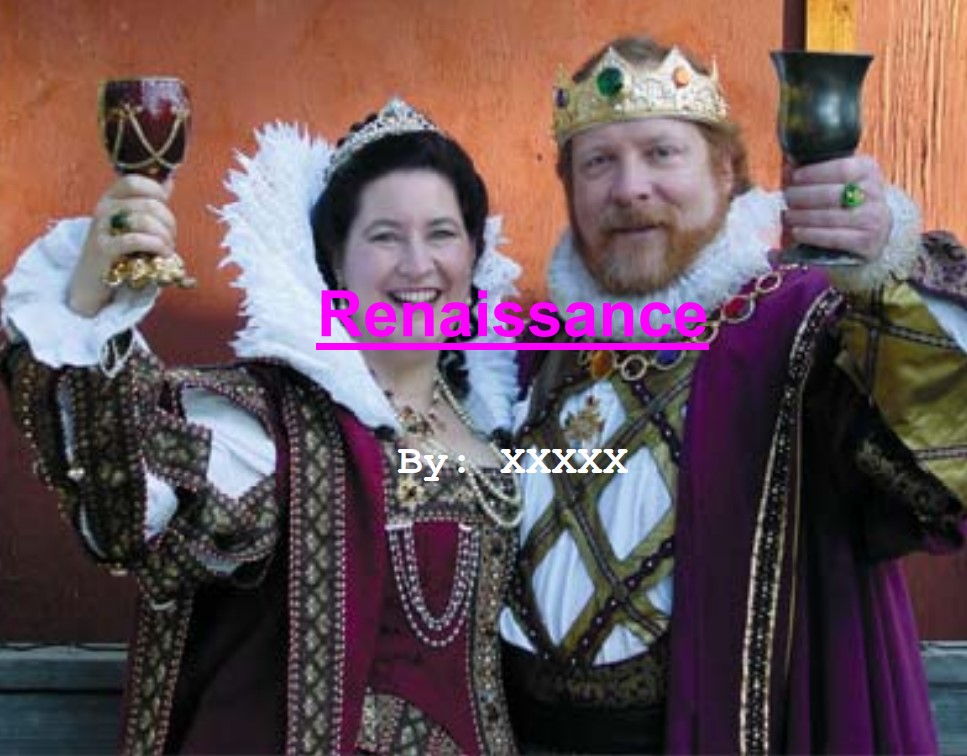
|